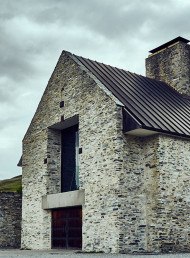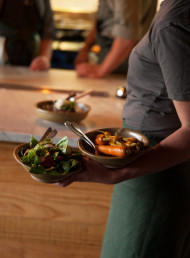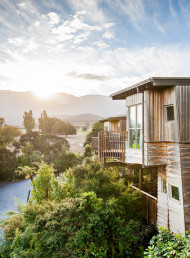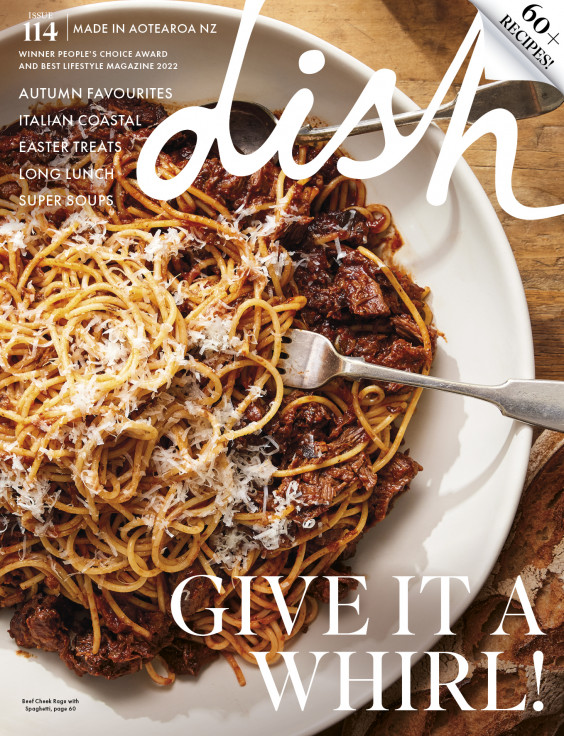Eco series: The Grille by Eichardt's
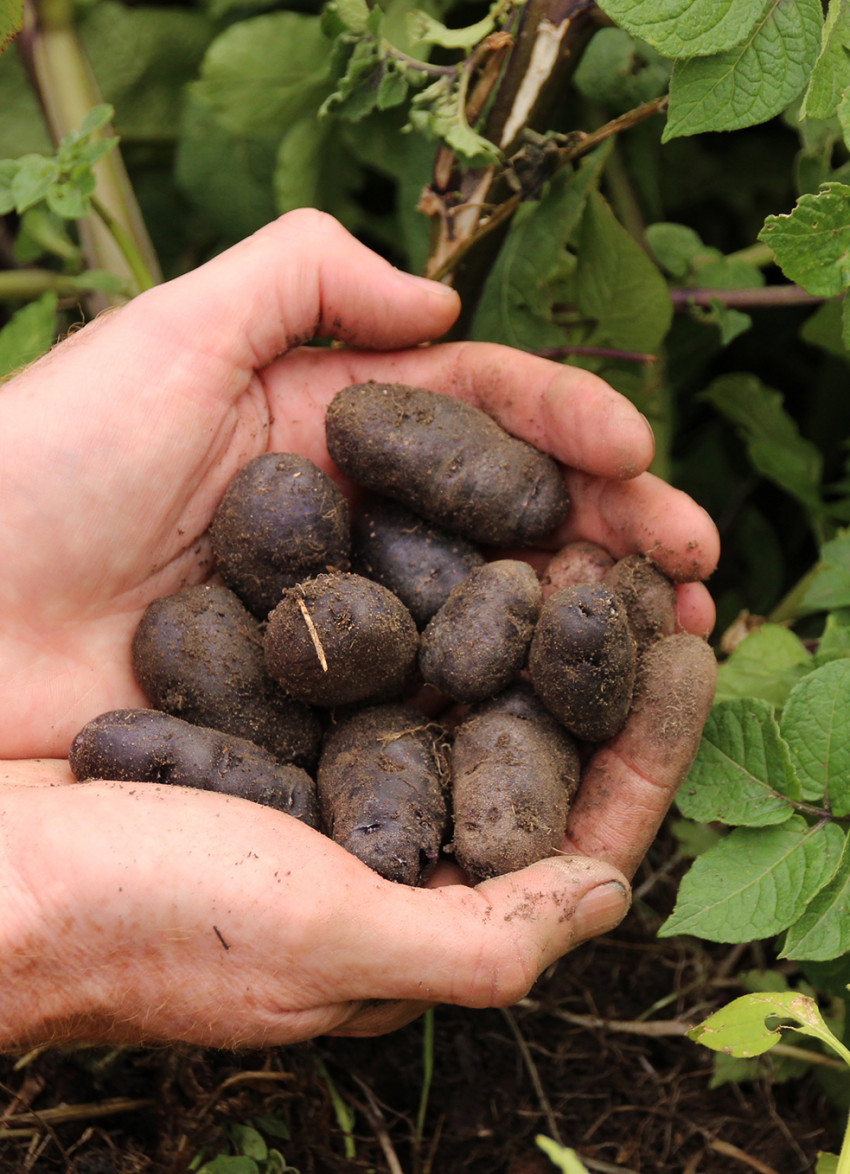
In the spring issue of Dish – on sale now – we talk to a Danish couple using wonderfully sustainable practices in their restaurant deep in a Swedish forest. But you don't need to head all the way to Europe – in our Eco Series we chat to New Zealand establishments also giving nature its due. Introducing The Grille by Eichardt's.
Sitting proudly alongside the glittering Lake Wakatipu, you’ll find The Grille by Eichardt’s Private Hotel – an establishment that holds pride of place in the heart of Queenstown.
It’s here that executive chef Will Eaglesfield creates contemporary dishes built around the region’s most plentiful seasonal produce, foraging wild redcurrants surrounding Moke Lake, walnuts from the trees in Kelvin Heights, pears and plums growing around ruined gold sluicing settlements in Bannockburn, raspberry canes planted generations ago by miners in Skippers Valley, fig trees in Arrowtown, field mushrooms in Frankton, and spectacularly fragrant wild thyme growing “just about everywhere” from Cromwell to Alexandra.
Here, chef Will explains how his love of mountain biking and daily commute to work, goes hand-in-hand with his passion for sourcing only the region's very best wild bounty.
Why is sourcing produce regionally so important to you?
Will: "Quality is a big thing. If it's coming from far away, it has to be picked beforehand and it has to survive the journey. I find the transporting process can rough things up a bit. Herbs are a classic example, if we grow our own, they'll last for five or six days, and still look as magnificent as the day we cut them.
Whereas if we buy in those that are grown even as far as the North Island, after two or three days, they're starting to wilt. Home-grown means they get that extra flavour, longevity. Every little bit of quality you can add during the ingredients stage shines through within the final dish."
When did foraging start for you? Has it always been the way you like to work?
"I guess I started about eight or nine years ago. I think it was Hugh Fearnley-Whittingstall at River Cottage, he does a lot of that. He got me really in to it. Here in New Zealand, there are a lot of the same homegrown ingredients that we get in the U.K – elderflowers, watercress. Those are a few key ingredients I use. I find it incredibly satisfying to be able to use ingredients that I haven't paid for that are part of the local landscape.
Another thing I really like is a word I only came across recently – trucklements – when you serve a dish with the food that naturally grows around it and naturally tends to complement it. In the cow paddocks, you'd find horse radish growing. As well as a whole lot of cow poo."
What advice would you offer a chef or restaurant looking to get in to foraging their own ingredients?
"You can get really good books on edible, native plants and also introductory plants. What I tend to do, as I'm biking – I do a lot of mountain biking – I keep a book with me. I'll keep an eye out and if I see something that might look tasty, particularly berries, I'll check and see if they're edible. I started with elderflowers and watercress, then got in to mushrooms. You have got to be really careful with mushrooms."
Do you keep your book on you all the time, or just when you're biking?
"I have a copy back home, so if I'm not sure, I'll take a little clipping of the leaves and the berries, just enough to identify it."
How often do you change your menu here at The Grille?
"We never change the whole menu, we'll only ever change a handful of dishes at a time. I'd say it's monthly? If the produce you've been waiting for becomes available, it can be really exciting. Gooseberries are my favourite. Sometimes you're left waiting for produce to arrive (in season). I love to start using peas and asparagus as soon as possible, but it can take a while."
What can a first-time diner expect from an experience at The Grille by Eichardt's, from your menu?
"We're a high-quality but relaxed atmosphere. There's an emphasis on local flavours that are high quality. We're about presenting classic dishes, with a fresh, modern style."
Walk me through your favourite places, around the region, to forage and source?
"We have spectacular views along Lake Wakatipu, taking in pine forests, native bush and the tussocky high country that stretches away towards Fiordland. We like our menu to reflect that view and to provide an edible tour of our region.
To that end we source Te Mana lamb, raised on Walter Peak Station, straight across the lake from us. This is a new breed of lamb designed to maximise flavour and marbling of healthy fats. We serve it as a duo with another superlative local lamb, Cardrona Merino, so guests can compare and contrast the two breeds.
As you look out from our dining tables, to the right of Walter Peak is the path from central Queenstown to Sunshine Bay. This is my commute to work, and is also where I gather wild marjoram blossoms at the end of Summer.
We dry this and blend with sea salt to provide the seasoning for our Parmesan Churros, served with black garlic puree and wild watercress pesto. From the restaurant, you can’t quite see where the watercress for this comes from, as it’s around the corner from Sunshine Bay and up a 4WD road towards Moke Lake. A 15-minute drive will get you there though.
Look a little further round to the right and you will see the pine forest covering the lower half of Ben Lomond. Here is where I find bolete mushrooms in autumn and rowan berries at the start of winter. This year we served the mushrooms on a chargrilled bruschetta with Gibbston Valley’s blue cheese, and the rowan berries make an occasional appearance on our dessert specials as a rowan and crab-apple jelly. The crab-apples came from a prolific tree next to the neighbourhood park I take my daughter to, and she eats almost as many as she picks up when we gather them together.
Further around to the east is where we have our kitchen vegetable patch. Apart from herbs, our main crops are rainbow beet (to go with whatever fish we have from Bluff that day) and yellow courgettes, which are mixed with the more traditional green ones and marinated in lemon, chilli, garlic and oil. These find their way into our sandwiches, pastas and salads. Then a little way past our veggie patch are back roads that are lined with elder trees. These provide two of my favourite ingredients to forage; elderflowers in spring and elderberries in autumn, both of which are great for cordials, sorbets and ice-creams. Elderberries also go very nicely with the wild venison that comes from Fiordland and the surrounding high country.
Other tasty things I’ve come across, generally while riding my mountain bike, are: wild redcurrants surrounding Moke Lake, walnut trees in Kelvin Heights, pear and plum trees around ruined gold sluicing settlements in Bannockburn, raspberry canes planted generations ago by miners in Skippers Valley, fig trees in Arrowtown, field mushrooms in Frankton, and spectacular fragrant wild thyme growing just everywhere in Cromwell and Alexandra.
All these goodies find their way into our food, whether we gather and preserve enough to last us several months, or just enough for a one-night-only special. They are what makes our food an expression of terroir that is as fun for us to prepare as for our guests to enjoy."
To read more about The Grille by Eichardt's, or to book a room at Eichardt's Private Hotel, head to eichardts.com.
latest issue:
Issue #114
Autumn has arrived, and with it, the latest issue of dish, jam-packed with recipes that will have you fizzing to get in the kitchen! With a long Easter lunch featuring perfectly pink, blushing roast leg of lamb and wildly decadent baked mashed potatoes with caramelised onions, to simply scrumptious chocolate treats and sensational seasonal baking this issue has you covered - we reckon the Hot Cross Buns are our best yet! Salads make way for soothing soups, pies, puddings and our cover star beef cheek ragù with spaghetti – a must-make dinner for family and friends. With over 60 recipes in our latest issue there’s plenty of inspiration to keep you busy – and well-fed! Don’t forget to share your dish dishes with our Facebook community.


